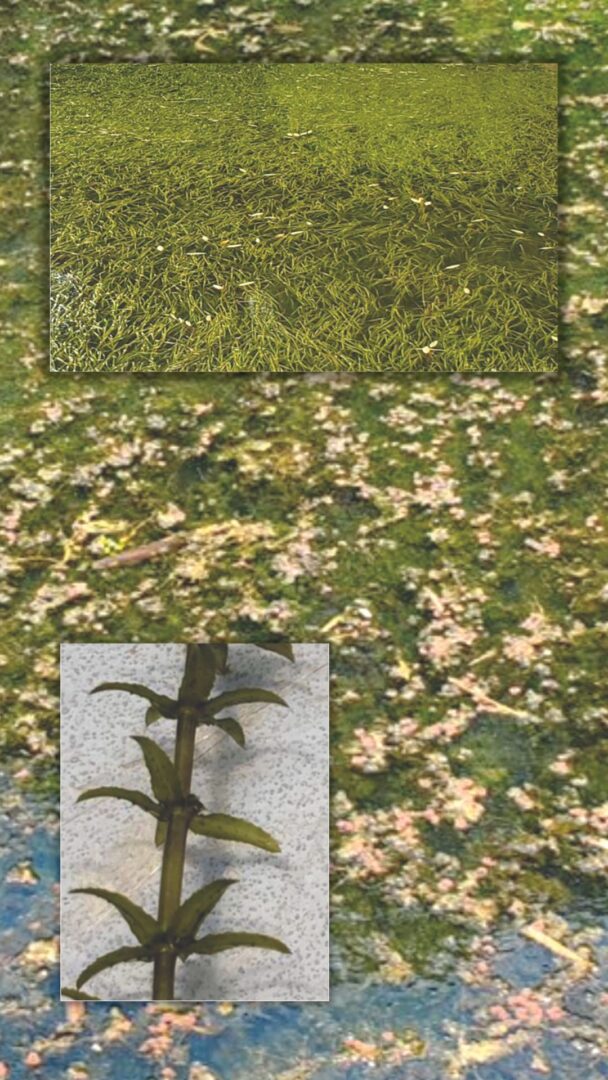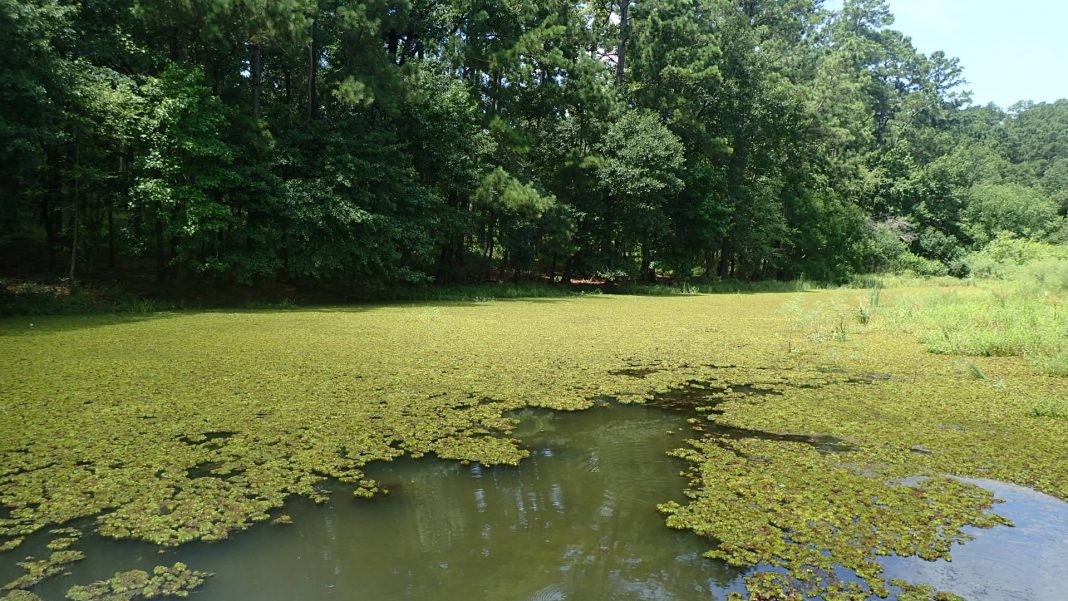Lake Conroe Aquatic Vegetation Highs and Lows
Lake Conroe has had its fair share of aquatic vegetation highs and lows over the years. For recreational purposes, aquatic vegetation is generally viewed as a nuisance and for good reason. It is frustrating when you have to stop and clean off the prop. Anglers view aquatic vegetation in a positive light as it has many benefits such as habitat and nursery beds for sport fish and prey species. As aquatic resource managers, we view rooted and non-rooted aquatic vegetation as beneficial if it does not impede the main recreational activity of the lake or reservoir. There are non-native and invasive species that tend to be more of a problem than your native and noninvasive species. Lake Conroe has non-native species present such as giant and common salvinia, water hyacinth, crested floating heart, hydrilla, alligator weed, and arundo. Aside from the non-native species, Lake Conroe is home to 32 species of native aquatic plants.
There are non-native and invasive species that tend to be more of a problem than your native and noninvasive species.
You may be like me and read the list above and be surprised by the diversity of aquatic vegetation within the lake. The diversity is what makes Lake Conroe in my opinion one of the best lakes within the state, although I may be biased since it is close to home and one of the major lakes that we manage from our Texas Parks and Wildlife district office. As mentioned above, aquatic vegetation within a water body can have many benefits such as fish and waterfowl habitat, water quality impacts, reduction in erosion, and aesthetics improvements.
Aquatic vegetation for fish habitat is straightforward, especially if you have ever cast a top-water bait into some lily pads or landed a streamer or crankbait along a weed line. Most of the time you get an explosion of water and a nice fight on your hands, Largemouth Bass in particular love structure. Other species that we often find nestled within the dense vegetation are bowfin, sunfish, gar, and catfish. These predatory fish are brought into the weed beds in search of forage. Forage fish hide among the weed beds and utilize them as nursery grounds and hiding spots. While consuming aquatic insects that can be found clinging along the leaves and stalks. This is also the reason that the aquatic vegetation is beneficial for waterfowl. Birds tend to hunt and forage within the vegetation for the forage species and aquatic insects found within.
What may not be so well known is the water quality impacts and potential improvements that having aquatic vegetation in a lake provide, whether it is native or non-native. Similar to your yard or garden nutrients and sunlight are the main drivers for aquatic vegetation growth. Aquatic plants need nitrogen and phosphorous to grow once one or both are depleted plants will stop growing. The level of nutrients in a reservoir is referred to as the trophic status which consists of three different levels oligotrophic, mesotrophic, and eutrophic. Oligotrophic is nutrient-limited and eutrophic is nutrient-rich, while mesotrophic is in the middle. In southern Texas, the majority of our waterbodies are considered eutrophic and some are considered hyper-eutrophic. In terms of vegetation growth this means that there will be something that grows in the lake or reservoir because the nutrients are present, this may be native, non-native, or phytoplankton. When you have native aquatic plants established, they reduce nutrients available for non-native species, the native plants also occupy habitat that otherwise non-native and potentially invasive species would occupy. Regarding sunlight, most aquatic plants will stop when the photic zone runs out, or when there is not enough light for photosynthesis to occur. In our eutrophic lakes and reservoirs, this is around 6-8 feet of water depth but will change depending on the water clarity. This is important to keep in mind when looking at where plants are growing, most of the time it is in the shallow waters where the light and nutrients are present.
Another benefit of aquatic vegetation is the reduction in erosion along shorelines and thus the improvement in water clarity due to reduced turbidity. Without plants, wind and wave erosion can be detrimental to a lake or reservoir and likely cause muddy or turbid water conditions. Aquatic plants help stabilize the bank and will reduce this erosion, thus increasing the clarity of the lake. This brings that picturesque image of a clear lake with fish swimming in it.
Now that we have discussed the benefits of aquatic vegetation let’s go through identification. Proper identification can help reduce the impact of invasive species and improve management of a waterbody and lake. When identifying plants you want to start by determining if they are submerged or floating. From there it is easier to break them down. We will go through some of the top misidentified aquatic plants and the species within Lake Conroe and surrounding lakes.
 Hydrilla close up showing the serrated edges
Hydrilla close up showing the serrated edges
Let’s start with hydrilla, a non-native and invasive plant in Lake Conroe and other lakes across the state. Hydrilla has leaves that grow in whirls of 3-8 and on the underside of the leaves have a serrated leave. This serration in my opinion is an easily identifiable trait.
Pondweed species growing with filamentous algae on top
A plant commonly confused with Hydrilla that is commonly found in shallow portions of Lake Conroe is Sago Pondweed. Compared to Hydrilla, Sago Pondweed has slender leaves, a thinner stalk, and the leaves spread out like a fan. Similar to Hydrilla, Sago Pondweed can grow very dense and clog props.
Coontail and algae
The third plant we commonly get questions about is Coontail. Key identifying characteristics of this plant are that it is found entirely underwater, its leaves are in a whirl giving it the Coontail name as in the late stages of growth looks similar to a Racoons’ tail. A unique characteristic of Coontail is that it is unrooted and will drift around with the wind.
Eel Grass in Lake Conroe.
The last plant to cover is Eel Grass, this plant is thin and ribbon-like and mostly submerged, the leaves are clustered at the base and it is usually found in clear water. The leaves can be found running along the surface which is probably why it gets confused with Hydrilla.
Next time you get out on the water go check out some aquatic vegetation, and when you cast a line along the edges or toss a topwater bait into the plants you could find yourself hooking into your next personal best. For additional resources on aquatic vegetation, fishing, or Lake Conroe please visit our website at
tpwd.texas.gov, [email protected], call 979-272-1430, or email [email protected].















